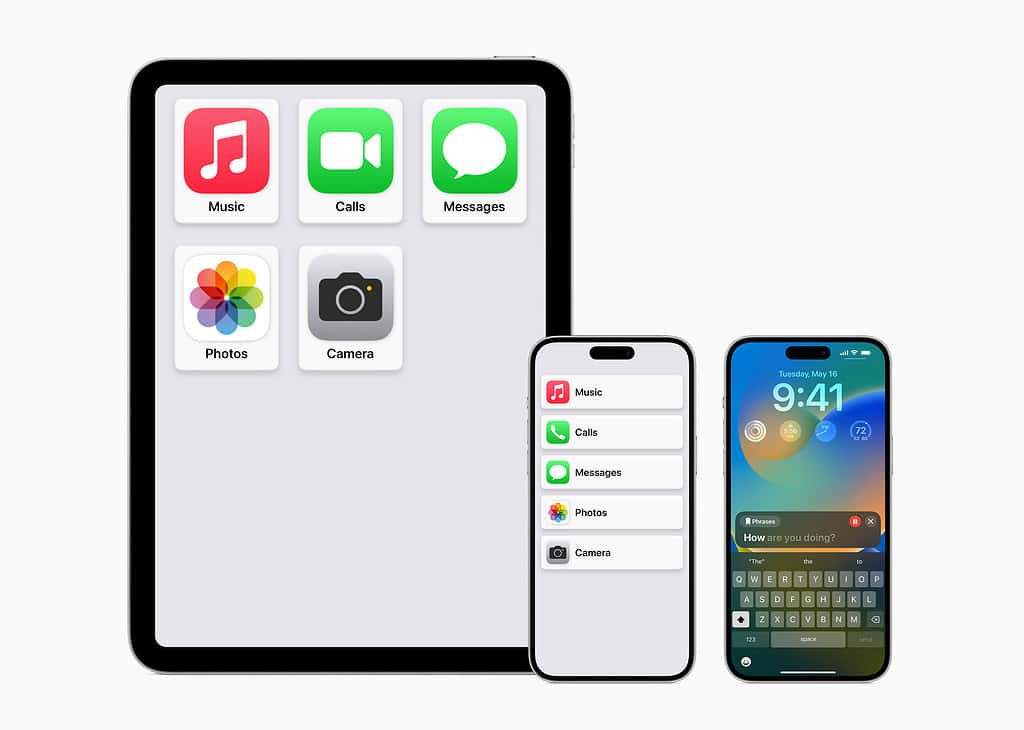Apple recently gave a sneak peek of new accessibility features coming to iOS 17, iPadOS 17, and the next version of macOS. These new features aim to improve cognitive, vision, and speech accessibility. They were said to have been built with feedback from disabled communities commissioned by the Cupertino-based tech giant. Specifically coming to iPhone and iPad later this year is a new Assistive Access feature. Read along to find out more about these new accessibility features.

What Is Assistive Access and How Will It Benefit the Disabled Community
Apple said that the new Assistive Access will give users with cognitive disabilities greater ease and independence when using the iPhone or iPad. Using innovations in design to distill apps and experiences to their essential features, Assistive Access lightens the cognitive load. This assistive feature also reflects feedback from people with cognitive disabilities and their trusted supporters. It focuses on the activities that those people enjoy and are fundamental to iPhone and iPad. This refers to connecting with people, capturing and enjoying photos, and listening to music.
When rolled out, Assistive Access will bring a customized experience for Phone and FaceTime. This will be combined into a single Calls app. The same holds true for Messages, Cameras, Photos, and Music. Assistive Access will provide a distinct interface with high-contrast buttons and large text labels. In addition, it will also have tools to help trusted supporters tailor the experience of the individuals they support with cognitive disabilities.
Apple gave examples of an emoji-only keyboard and the option to record a video message. Disabled users and supporters can also choose between a more visual, grid-based layout for their device’s Home Screen and apps. Meanwhile, those who prefer text can choose a row-based layout for apps.
What Are the Live Speech and Personal Voice Advance Speech Accessibility Features?
Aside from Assistive Access, Apple will also roll out Live Speech on iPhone, iPad, and Mac. With Live Speech, users with a speaking disability can type what they want to say and have it spoken aloud during phone and FaceTime calls. They can also use the feature during in-person conversations. These folks can also save commonly used phrases and then let them chime in during lively conversations.
For those who are at risk of losing their ability to speak, such as those recently diagnosed with ALS (amyotrophic lateral sclerosis) or any other conditions that impact speaking ability, Apple is also deploying a new Personal Voice feature. This uses on-device machine learning to provide a simple and secure way of creating a digital voice that sounds like these folks.
When rolled out, folks with such disabilities can create a Personal Voice by reading along with a randomized set of text prompts to record 15 minutes of audio on their iPhone or iPad. Using on-device machine learning, customers’ information remains private and secure while integrating seamlessly with Live Speech. Hence, iPhone owners can speak with their Personal Voice when connecting with loved ones.
For Apple Users Who are Blind or With Low Vision, There’s Point and Speak Feature
Finally, for those who are blind or with low vision, the new Point and Speak in Magnifier feature will make it easier for them to interact with physical objects that have several text labels. Apple gave an example of how this feature works.
For example, while using a household appliance — such as a microwave — Point and Speak combines input from the camera, the LiDAR Scanner, and on-device machine learning to announce the text on each button as users move their fingers across the keypad.2 Point and Speak is built into the Magnifier app on iPhone and iPad, works great with VoiceOver, and can be used with other Magnifier features such as People Detection, Door Detection, and Image Descriptions to help users
navigate their physical environment.
Other New Accessibility Features That Are Coming to iPhone, iPad and Mac
In addition to the above-mentioned new accessibility features Apple will also be rolling out the following additional features:
- Made for iPhone Hearing devices: Deaf or hard-of-hearing folks can pair them directly to Mac and customize them to their hearing comfort
- Voice Control: Folks who type with their voice can choose the right word out of several that might sound alike.
- Switch Control: Folks with physical and motor disabilities will be able to turn on any switch into a virtual game controller so that they can enjoy playing their favorite games.
- Text Size: This will allow folks with low vision to adjust text size across Mac apps including Finder, Messages, Mail, Calendar, and Notes.
- Pause Images with Moving Elements: Those who are sensitive to rapid animations can use this feature for GIFs, Messages, and Safari.
- VoiceOver: For folks who use VoiceOver, Siri voices will sound more natural and expressive even at high rates of speech feedback.
Final Words
As mentioned, all these new accessibility features won’t arrive until later this year. However, as usual practice, Apple gives a preview of them in line with the Global Accessibility Awareness Day is being celebrated globally. These features should come out as part of iOS 17 and iPadOS 17,, and the next version of macOS.
